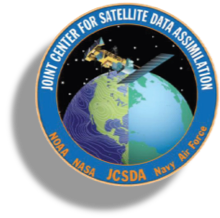Article by Dr. Patrick Stegmann, JCSDA CRTM Core Team
As part of a two-week code sprint from January 20th to 31st , CRTM community users and core developer team members came together at the Earth System Science Interdisciplinary Center (ESSIC) in College Park MD to organize the existing gaseous transmittance coefficient generation software into a coherent, end-to-end package.
CRTM code sprinters from the JCSDA, NOAA, and NASA are focused on a challenging task. (Photo: B. Johnson)
Unversioned and all but abandoned legacy code can provide a particularly challenging basis for developing new features and the development history of the CRTM can be traced back more than 20 years. The OPTRAN algorithm providing the basis for the modern ODAS and ODPAS code in the CRTM can be traced back even further. However, by embracing agile software development principles and utilizing modern project management tools, such as strict version control via git and issue tracking through Zenhub, the code sprinters from NOAA, NASA, and the JCSDA were able to achieve the desired goals:
Developing a self-contained package for the computation of gaseous transmittance coefficients.
Validating the package through existing data.
Providing access to the package to key users via a central, version-controlled repository.
Disseminating the knowledge on how to acquire, build, run, and develop the coefficient generation package to said key users.
Coefficient generation code sprint participants comparing results and exchanging ideas. (Photo: B. Johnson)


